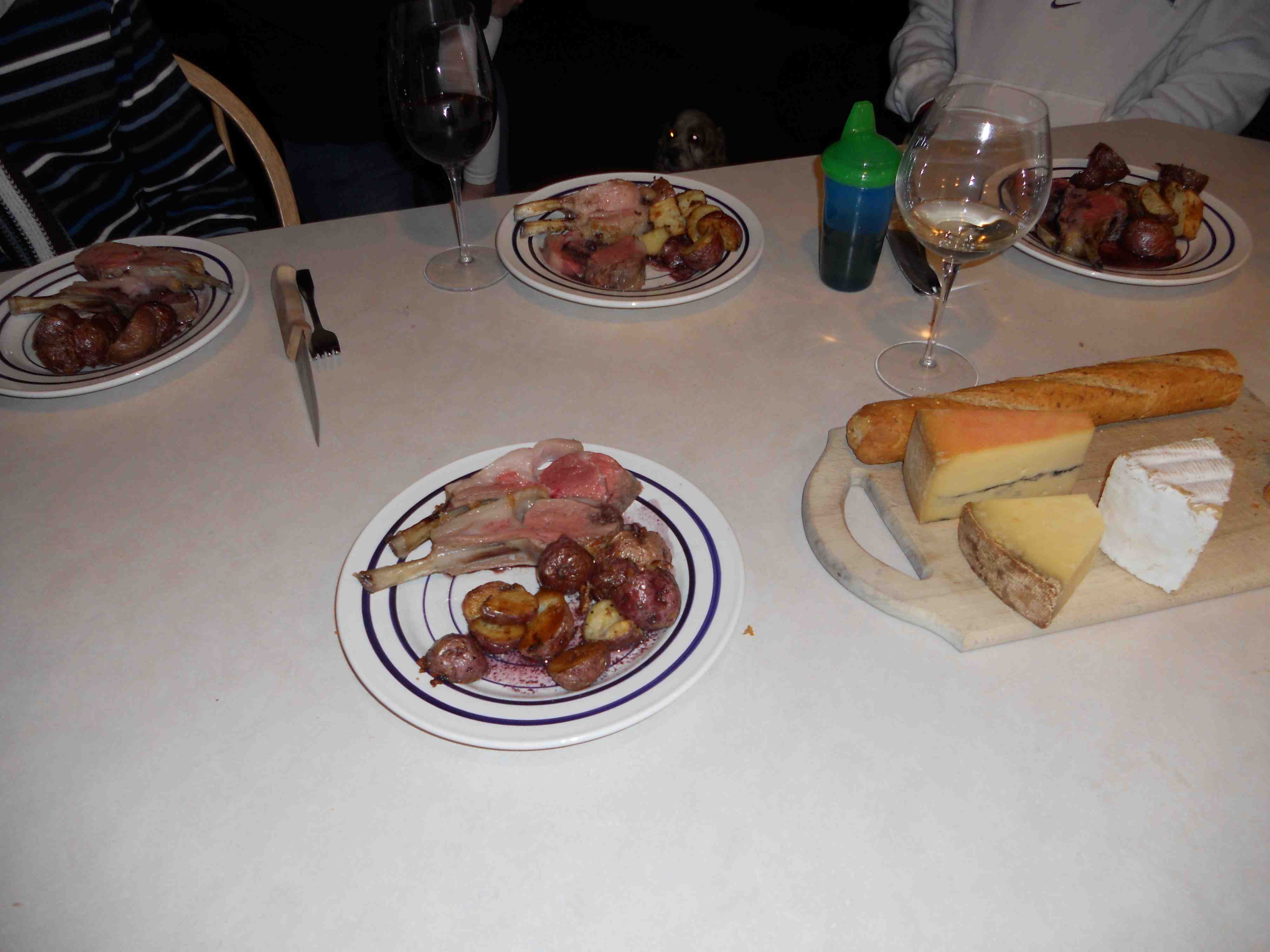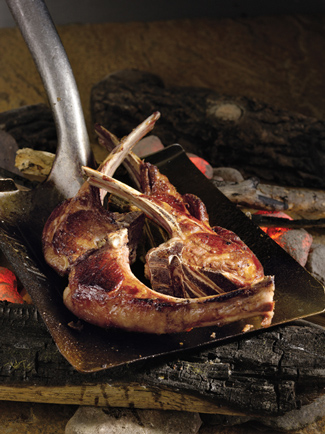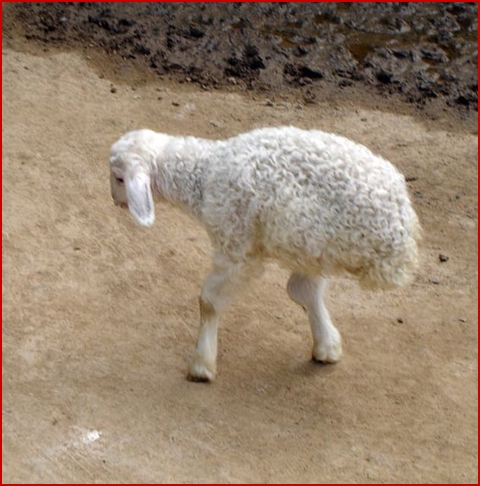The Toronto Globe and Mail used to be a decent newspaper. I was enamored with the paper and its journalists as a genetics undergrad, was thrilled when I started writing regularly for the paper in the  1990s, and then dismayed as the amount of crap published began to far outweigh the thoughtful stuf.
1990s, and then dismayed as the amount of crap published began to far outweigh the thoughtful stuf.
Once such sign of decline was the hiring of columnist Leah McLaren about a decade ago. Chapman was somewhat enamored with her self-indulgent depictions of young female life in hip Toronto; I thought it was bullshit.
Leah is still at the Globe as it continues its drawn-out decline, and wrote on Saturday that,
“This year for Christmas I poisoned the in-laws.
“They had flown all the way from Toronto to spend the holidays in London, dragging several extra bags of gifts across the Atlantic like a modern-day Santa and Mrs. Claus. In return, I had planned a feast for dinner.
“The centrepiece of the meal was a beautifully aged prime rib roast. I had purchased it, for nearly $100, from my local Notting Hill butcher, who specializes in organic, free-range, ethically farmed beef, lamb and poultry.
 “I don’t eat much meat these days, but everything about that shop made me feel safe, from the quaint striped awning to the well-heeled locals queuing up for their premium giblets to the butcher with his starched, white-linen apron making small talk as he trimmed the leg of lamb. Even the store’s slogan (“Real meat naturally fed”) was heartening. What could possibly be more healthy, comforting or downright trendy than a rib roast for Christmas? As I stepped out of the shop with my several pounds of Grade A flesh in hand, I was determined to follow the butcher’s emphatic instructions: “Do not overcook.”
“I don’t eat much meat these days, but everything about that shop made me feel safe, from the quaint striped awning to the well-heeled locals queuing up for their premium giblets to the butcher with his starched, white-linen apron making small talk as he trimmed the leg of lamb. Even the store’s slogan (“Real meat naturally fed”) was heartening. What could possibly be more healthy, comforting or downright trendy than a rib roast for Christmas? As I stepped out of the shop with my several pounds of Grade A flesh in hand, I was determined to follow the butcher’s emphatic instructions: “Do not overcook.”
“And I didn’t. The prime rib was perfect – except for the 36 hours of stomach-churning misery it caused everyone who ate it.”
Leah’s lesson from all this? Don’t eat red meat.
One Moses Shuldiner responded with a letter in the Globe today, stating that Leah’s “mistake was to not inform herself of proper food handling techniques as recommended by the Toronto Public Health Department, which can be downloaded from the City of Toronto’s website. … After reading information from public health anyone can, for a nominal fee, write the test to become a certified food handler, ensuring mastery of the material.”
 Shill. Mere mortals do not have to become certified food handlers to cook dinner for the in-laws, or anyone else. I cooked lamb on Christmas Eve and my 1-year-old ate it. No one barfed. Use a tip-sensitive digital meat thermometer. Next time, Leah, stick it in.
Shill. Mere mortals do not have to become certified food handlers to cook dinner for the in-laws, or anyone else. I cooked lamb on Christmas Eve and my 1-year-old ate it. No one barfed. Use a tip-sensitive digital meat thermometer. Next time, Leah, stick it in.
 with no added hormones."
with no added hormones."
 castle in Wales.
castle in Wales.
 Christmas Eve dinner in Manhattan with a couple of Kansas State modern languages graduate students from Senegal (they speak French there).
Christmas Eve dinner in Manhattan with a couple of Kansas State modern languages graduate students from Senegal (they speak French there).
 fascinating farm animal things on Facebook.
fascinating farm animal things on Facebook..jpg)
 Faded Tribune reports
Faded Tribune reports 1990s, and then dismayed as the amount of crap published began to far outweigh the thoughtful stuf.
1990s, and then dismayed as the amount of crap published began to far outweigh the thoughtful stuf. “I don’t eat much meat these days, but everything about that shop made me feel safe, from the quaint striped awning to the well-heeled locals queuing up for their premium giblets to the butcher with his starched, white-linen apron making small talk as he trimmed the leg of lamb. Even the store’s slogan (“Real meat naturally fed”) was heartening. What could possibly be more healthy, comforting or downright trendy than a rib roast for Christmas? As I stepped out of the shop with my several pounds of Grade A flesh in hand, I was determined to follow the butcher’s emphatic instructions: “Do not overcook.”
“I don’t eat much meat these days, but everything about that shop made me feel safe, from the quaint striped awning to the well-heeled locals queuing up for their premium giblets to the butcher with his starched, white-linen apron making small talk as he trimmed the leg of lamb. Even the store’s slogan (“Real meat naturally fed”) was heartening. What could possibly be more healthy, comforting or downright trendy than a rib roast for Christmas? As I stepped out of the shop with my several pounds of Grade A flesh in hand, I was determined to follow the butcher’s emphatic instructions: “Do not overcook.” Shill. Mere mortals do not have to become certified food handlers to cook dinner for the in-laws, or anyone else.
Shill. Mere mortals do not have to become certified food handlers to cook dinner for the in-laws, or anyone else. .jpg) For Christmas Eve dinner, which has no special significance other than we made it home from Minnesota before the storm hit, only to get walloped in Manhattan, I decided to cook the lamb – with a rosemary, Dijon mustard glaze, to a yummy and greasy thermometer-verified 140F. Accompanied with roasted potatoes and carrots, along with microwaved asparagus in garlic, olive oil and balsamic vinegar, with whole wheat rolls and a mushroom-fat-free-lamb-stock roux. Served with a 2005 Zinfandel from Napa Valley courtesy of Amy’s Aunt Jean and Uncle Mark.
For Christmas Eve dinner, which has no special significance other than we made it home from Minnesota before the storm hit, only to get walloped in Manhattan, I decided to cook the lamb – with a rosemary, Dijon mustard glaze, to a yummy and greasy thermometer-verified 140F. Accompanied with roasted potatoes and carrots, along with microwaved asparagus in garlic, olive oil and balsamic vinegar, with whole wheat rolls and a mushroom-fat-free-lamb-stock roux. Served with a 2005 Zinfandel from Napa Valley courtesy of Amy’s Aunt Jean and Uncle Mark. 
 What better occasion to try out alleged
What better occasion to try out alleged  And I didn’t take pictures of Thursday’s dinner, but Top Chef on Wed. night also struggled with lamb, and none of the hot-shot chefs could agree on how to define medium-rare lamb.
And I didn’t take pictures of Thursday’s dinner, but Top Chef on Wed. night also struggled with lamb, and none of the hot-shot chefs could agree on how to define medium-rare lamb.  The lamb shoulder roast we had last night was cooked to 140F.
The lamb shoulder roast we had last night was cooked to 140F.  This weekend during a mini-adventure an hour north I got to tick two things off my Things to do in New Zealand list: drive on the left side of the road and pet a lamb. While the former turned out to be easier than initially presumed (aside from roundabouts), it was the latter that had me giddy.
This weekend during a mini-adventure an hour north I got to tick two things off my Things to do in New Zealand list: drive on the left side of the road and pet a lamb. While the former turned out to be easier than initially presumed (aside from roundabouts), it was the latter that had me giddy..png)
.jpeg)

.jpg)